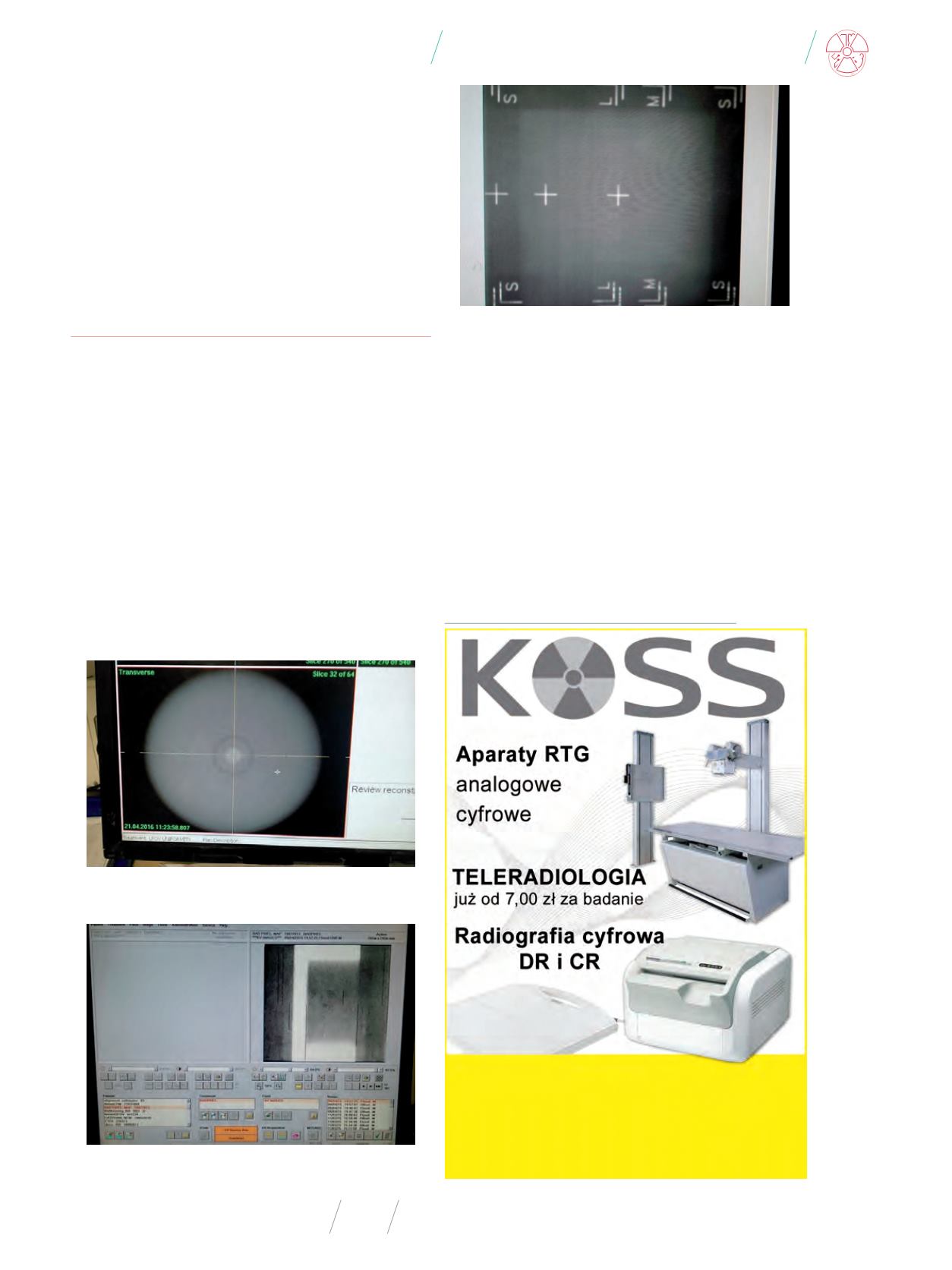
Inżynier i Fizyk Medyczny 5/2016 vol. 5
277
artykuł
/
article
radioterapia
/
radiotherapy
Single gain calibration for the XVI ver. 5.0.2 is carried out for free
air condition. It has to be completed for all FOVs, with and without
bowtie filter as well as all used kVs. The gantry has to be moved to the
0 position to avoid the panel sag effect and non-uniform exposure of
the active matrix. All images have to be verify in terms of the pixels
values (it should be around of the 46 000 value), saturation phenome-
non as well as artifacts occurrence using the XIS.EXE application. The
pixels values provides information about a panel sensitivity and gen-
erator output matching in relation to that sensitivity after calibration
procedure (Fig. 8).
LAG AND GHOSTING
One factor limiting the CBCT image quality for a-Si x-ray detectors is
detector lag, stemming from charge trapping in the a-Si layer. Lag is
defined as residual signal present in one frame but created in a pre-
vious frame. In CBCT reconstructions active matrix lag can lead to
a range of image artifacts, such as severe image shading for ellipti-
cal or off-center objects. In projections, lag causes temporal blurring
and reduces temporal resolution. Ghosting of indirect image detec-
tors is observed as an increase in x-ray sensitivity after the active
matrix is exposed to radiation. This phenomenon is caused charge
trapped in a-Si due to previous radiation exposure fills the traps and
reduces the probability of further charge trapping in subsequent ex-
posures. It results reduction in x-ray sensitivity due to charge trap-
ping. The lag and ghosting issues of indirect detectors (Perkin-Ele-
mer panel) can be attributed to three source of mechanisms: charge
trapping and release in a-Si photodiode; after-glow CsI scintillator
and incomplete readout of charge from the pixel to the charge am-
plifiers. Even leaving the detector for 24 hours to “clear” the “residu-
al” signals don’t have to result full erasing of it – especially for long/a
lot used imaging detectors (Fig. 9-11). However it is very important
to perform final CAT after that time (especially for SFOV due to re-
sidual signal after flex map calibration and very high saturation of
the active matrix). For example, received results of uniformity and
contrast tests for SFOV were respectively 1.53% just after the cal-
ibration procedure and 0.74% after 24 hours, 2.09% just after the
calibration procedure and 1.87% after 24 hours.
RENTGEN-SERWIS
Zygmunt Koss Rafał Koss
ul. Kasjopei 8 • 80-299 Gdańsk
tel. 58 511 09 03 • tel. kom. 603 270 482
e-mail:
reklama
Fig. 9
. Ghosting after flex map calibration – the BB phantom residual image
Source: Own results.
Fig. 10
. CATPHAN phantom residual image in the Bad Pixel map image
Source: Own results.
Fig. 11
. CATPHAN phantom residual image in the panel alignment image
Source: Own results.


